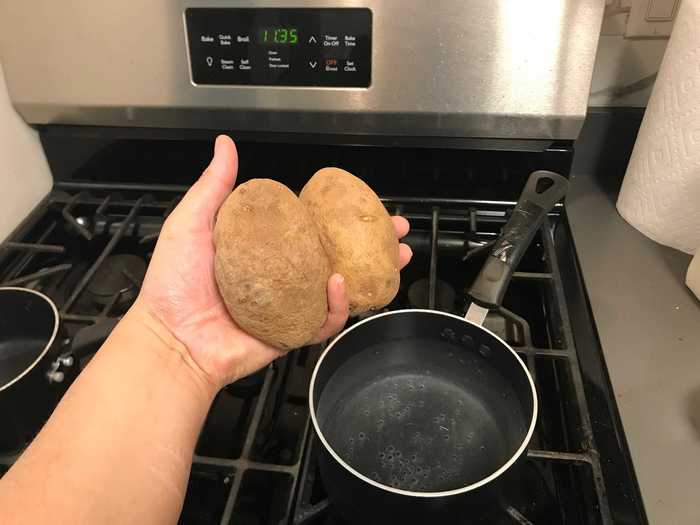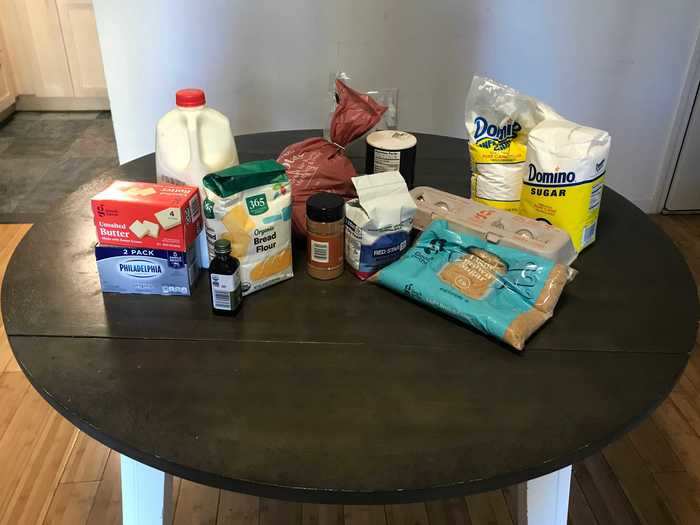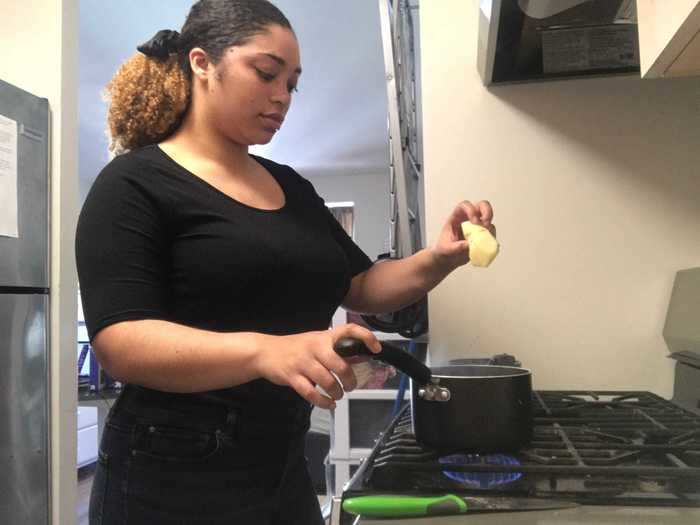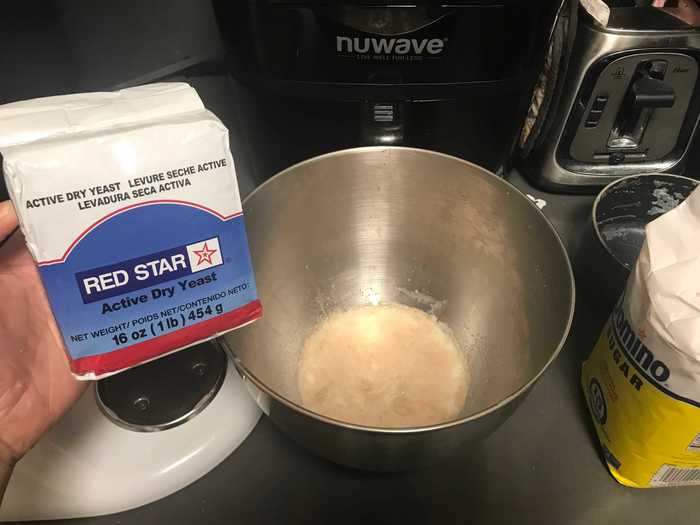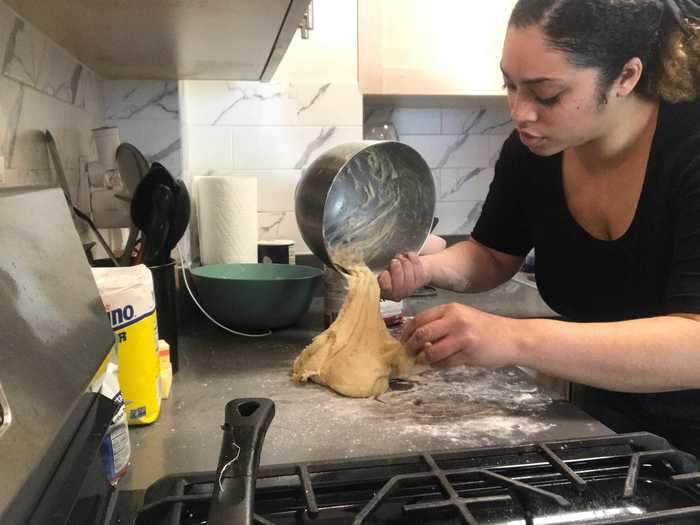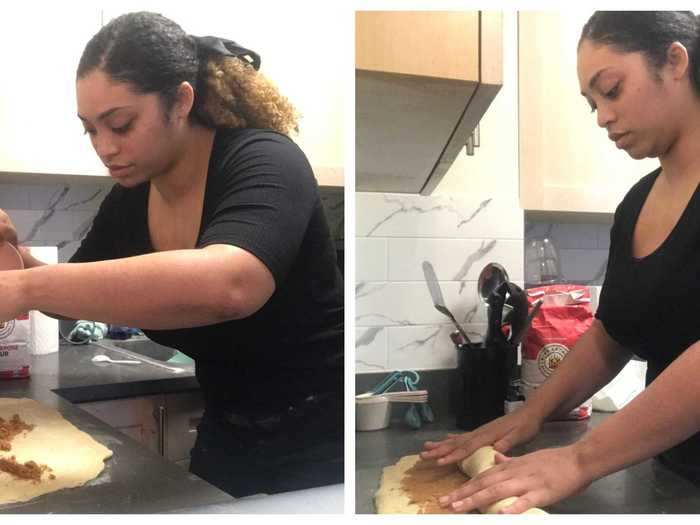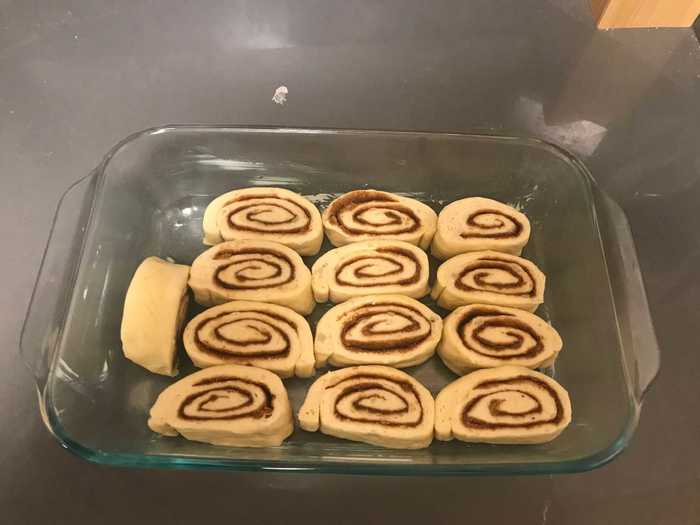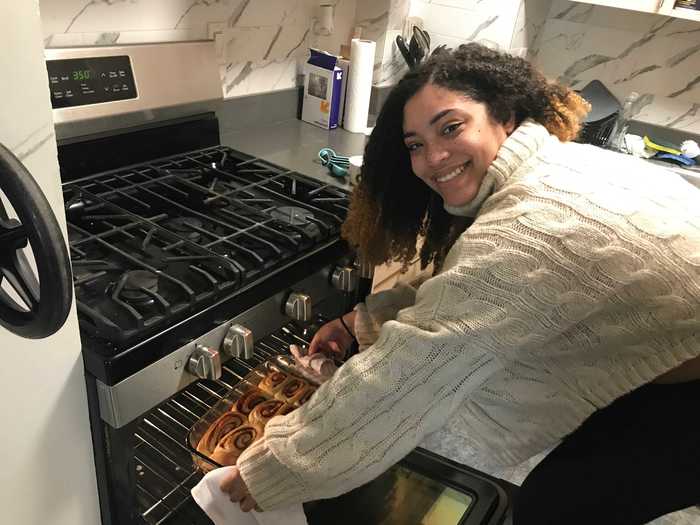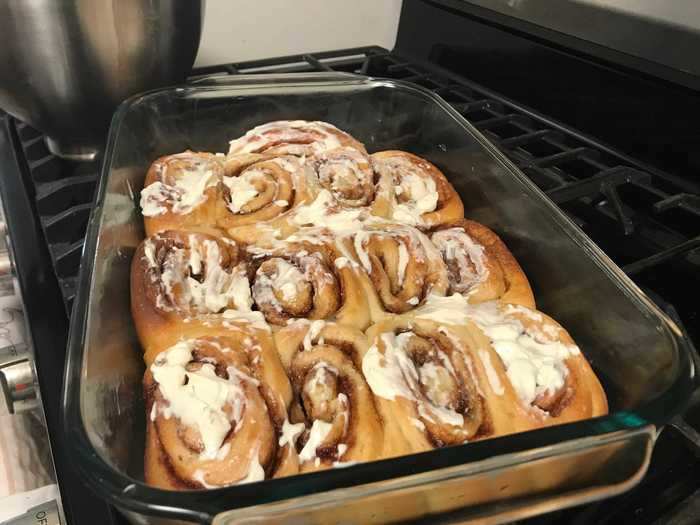Insider
- Martha Stewart created a cinnamon-roll recipe that incorporates mashed potatoes.
- Stewart said that mashed potatoes are "the secret behind the light texture" of her cinnamon rolls.
- The mashed potatoes definitely added a fluffy consistency, but the recipe was time-consuming.
According to Martha Stewart, cinnamon rolls "will turn anyone into a morning person." And I definitely agree.
Some of my favorite childhood memories were waking up in the morning and racing into my kitchen, where the smell of gooey cinnamon rolls topped with icing filled the air. My family relied on store-bought versions like Pillsbury Grands! Cinnamon Rolls that were so dense we never finished a whole batch in one sitting.
But in December, Stewart caught my cinnamon roll-loving attention when she re-shared her 2018 recipe that promised to yield the "lightest, fluffiest cinnamon rolls ever" thanks to one unexpected ingredient: mashed potatoes.
"The secret ingredient to pillowy perfection? Adding a russet potato," the 79-year-old chef and lifestyle icon wrote on Instagram.
While the mashed potatoes did make the cinnamon rolls undeniably airy and delicious, the two-day baking process was more time-consuming than I'd anticipated.
Stewart's trick may seem odd to the average home baker, but it's actually pretty common. Bakers often add mashed potatoes to cinnamon rolls and other pastries to make them extra fluffy.
Adding mashed potatoes to a pastry can help keep it moist and fluffy.
Lauren Edmonds
While adding mashed potatoes into pastries can seem strange, there are a few good reasons to do so.
Southern Living's Patricia S. York wrote that potatoes are rich in potassium, which causes the yeast to rise quicker than bread that only contains wheat.
The starch in mashed potatoes also retains water, which helps maintain moisture in baked goods that might otherwise dry out.
The recipe calls for 13 ingredients, including active dry yeast, and has five major steps.
The recipe called for three types of sugar and active dry yeast.
Lauren Edmonds
In typical Stewart fashion, the cinnamon-roll recipe took no shortcuts and required each component to be made from scratch. The majority of the ingredients can be found in local grocery stores, but items like active dry yeast and bread flour may require a trip to Whole Foods.
The recipe called for:
- In total, 12 tablespoons of unsalted butter (six for the dough and six for the filling)
- One medium russet potato
- In total, one cup and three tablespoons of whole milk
- 2 ¼ active dry yeast
- One large egg
- ⅔ granulated sugar
- 3 ½ cups of bread flour
- 1 ½ teaspoon of kosher salt
- ⅔ cup of packed light brown sugar
- Two teaspoons of ground cinnamon
- Four ounces of cream cheese
- ½ cup of confectioners' sugar
- ½ teaspoon of pure vanilla extract
Be forewarned: This is not a simple process. You have to separately make the mashed potatoes, the dough, the cinnamon filling, and the cream-cheese glaze that goes on top. The recipe's active prep time is 50 minutes, while the entire process takes an estimated 13 hours and 35 minutes, which includes rising time.
The potato was boiled and prepared for mashing at the start of the recipe.
The potatoes took about 12 minutes to cook in a small pot of water.
Lauren Edmonds
After peeling and cutting the potato, Stewart recommended boiling it in a small pot of water until it was "fork-tender." Then, drain the potato and mash it with either a ricer or fork.
Unfortunately, the bag of russet potatoes that I bought was a bit on the small side, so I boiled two potatoes just in case. I also don't own a ricer, so I had to hand mash my potatoes with a fork.
I noticed that it was much harder for me to get a smooth consistency with only a fork, so I was a bit worried that my cinnamon rolls would be lumpy. I also feared that I might bite into one and find it was more baked potato than sweet, cinnamon-y treat.
I covered my mashed potato and let it sit in the microwave to stay warm while I moved on to mixing the dough next.
Making the dough from scratch was the most challenging task.
It took at least five attempts and a call to my father for me to realize how active dry yeast worked.
Lauren Edmonds
First, I heated milk on a stovetop until it was warm to the touch, or 110 degrees Fahrenheit on a thermometer, then poured it into my stand mixer. The recipe then called for the active dry yeast.
I'll admit, I've never been much of a baker — or good at science — so using active dry yeast for the first time was a doozy. When I poured the yeast into my warm milk, I stood there for 15 minutes and waited for any sign of a chemical reaction.
But I saw nothing and didn't see any changes the following three times I tried to activate the yeast.
Several Google searches and a call to my father later, I figured out that yeast needs "food" to activate, and a pinch of added sugar did the trick. It produced a small number of bubbles and a slightly foamy consistency.
Everything was integrated in a stand mixer with a dough hook attachment.
After dusting my kitchen counter with flour, I smoothed the dough into a rectangle and began adding the filling.
Lauren Edmonds
I combined the ingredients in the stand mixer with butter, granulated sugar, one egg, bread flour, a pinch of salt, and the mashed potato. It transformed into a pliant and supple dough that was easily kneaded into a ball.
Stewart said that the dough could be covered and refrigerated for up to two days at this point in the recipe, but I steamed ahead with the cinnamon rolls.
I placed the dough in a buttered bowl covered with plastic wrap, then let it rise for the next 90 minutes.
The cinnamon filling was far easier and only required everyday items found in my pantry.
I spread the cinnamon filling onto the dough and then rolled it into a log.
Lauren Edmonds
The filling mixture was a much simpler task and only required four ingredients: ground cinnamon, light-brown sugar, butter, and just a pinch of salt.
After I punched down my dough and rolled it out into a 14-by-18-inch rectangle, I spread room-temperature butter across the surface, leaving a ½-inch border along the edges.
I poured the cinnamon filling onto the dough, spread it out as evenly as I could, and rolled the covered dough up into a tight log shape. I cut this into 13 cinnamon rolls, which I then placed in a buttered glass and covered with plastic wrap.
Stewart suggested that the cinnamon rolls refrigerate at least eight hours or overnight before baking- making this a two-day recipe.
I managed to get 13 cinnamon rolls from my batch.
Lauren Edmonds
Most people are likely used to quick, less-hassle prepared cinnamon rolls from Pillsbury or Annie's that take about 20 minutes to make. Stewart, however, chose a more arduous approach that required her cinnamon rolls to rest overnight in the refrigerator.
While I assumed this would only help the rolls, I thought about how this recipe isn't suited for spur-of-the-moment breakfasts or a random dessert craving.
However, Stewart notes that the cinnamon rolls can be "made, sliced, and frozen up to three months ahead" of baking.
So, sugar-lovers in search of a quick fix should probably find a different treat.
The next day, I baked the cinnamon rolls in the oven for 35 minutes while I whisked together the glaze.
It was finally time to bake the cinnamon rolls!
Lauren Edmonds
The following day, I removed the cinnamon-roll tray from my refrigerator and placed it into the oven preheated to 350 degrees Fahrenheit. Their saccharine smell quickly filled up the studio apartment and reminded me of Saturday mornings with my parents.
The dough began to brown about 15 minutes in and continued to bake for another 20 minutes.
Meanwhile, I whisked together a creamy icing made from confectioner's sugar, milk, vanilla extract, salt, and cream cheese. I drizzled the icing over the cinnamon rolls once they were out of the oven and let them rest for 20 minutes to solidify.
Stewart's cinnamon rolls were a delicious and gooey treat, but the process took one day longer than I wanted.
Stewart's version of cinnamon rolls will definitely be added to my recipe wheelhouse.
Lauren Edmonds
These cinnamon rolls, with no exaggeration, were some of the best ones I've ever had. The mashed potato blended in with the other ingredients without a hitch and wasn't even noticeable in taste, though they absolutely improved the texture.
Each roll was light, airy, and lacked the heavy mouthfeel that usually comes with the baked good. There was just the right amount of cinnamon filling to give the rolls a sweetness boost, while the cream cheese icing cut down any overly saccharine taste.
Also, the mashed potato made this batch exceptionally moist! Even after they were baked, they remained firm and soft the next day.
All that said, this recipe would work best for people planning breakfast or dessert in advance. It's not something to try if people want a quick or small bite to munch on. But if you have the patience and time, it's definitely worth trying Stewart's cinnamon-roll trick.

